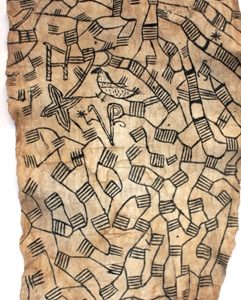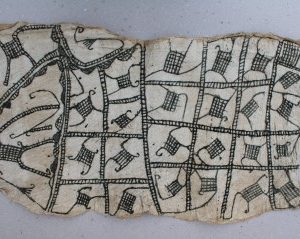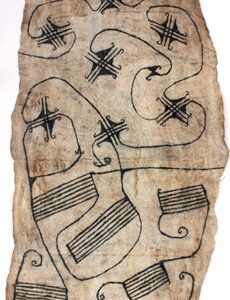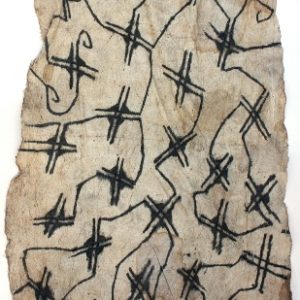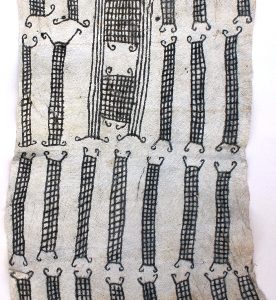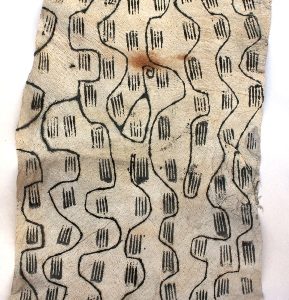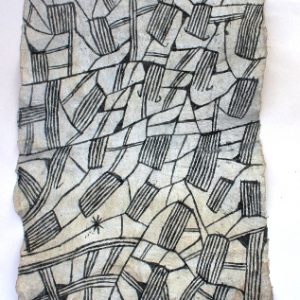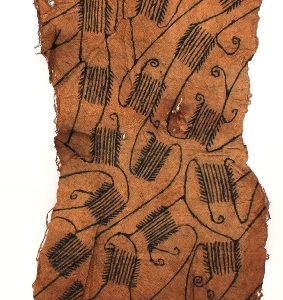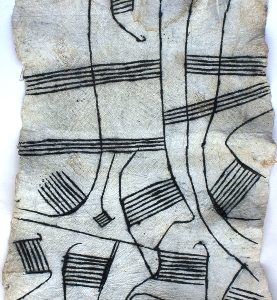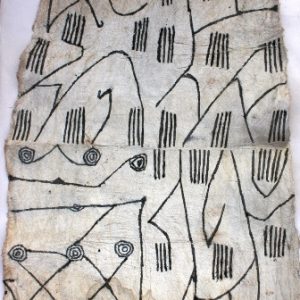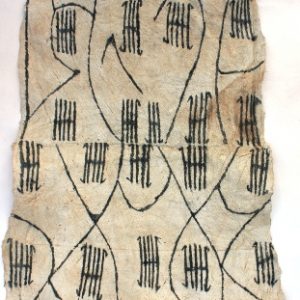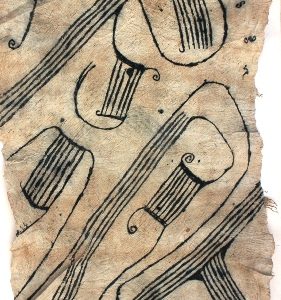Before the colonial era, barkcloth was the main item of men’s and women’s clothing in Central Africa. Women also carried small pieces of barkcloth and placed them over wooden stools.
Women foragers of the Ituri Forest in north-eastern D R Congo paint rhythmical, free, oscillating patterns on pieces of pounded inner bark of the fig tree that has been beaten with a mallet made of ivory, bone or wood. The cutting and pounding of the bark is done by men.
Often, working with a mixture of gardenia juice and carbon black women did most of the painting using a fibre brush. Although much of the iconography remains undecifered, they employ the same rich repertory of motif and design that they apply in painting the bodies of their family and friends. In addition, women are the architects of the Ituri world. And they are the masters of the polyphonic, yodel-like style of singing special to Ituri foragers.
Ituri aesthetics links art and song. Both use polyphonic structures; contractions of intervals; macro-complications of structure in terms of successive passages; micro-complications of structure in terms of small motifs, modified at each repetition; staggered entrances and exits of line; and a strikingly playful multi-voiced mode of exposition.
For additional literature or information on specific pieces, or inquiries on availability of other pieces, perhaps not viewed in this collection, please contact us.
Showing all 12 results
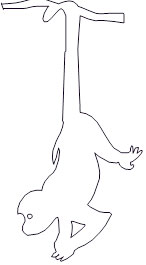
 0 items
0 items 